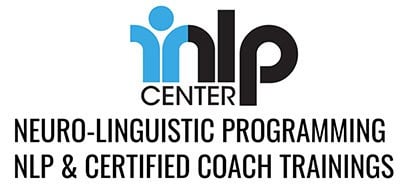
The iNLP Center AHA Solution self-sabotage program breaks psychological attachments into twelve types and helps you understand your type, or types, and how to end the cycle. Because this is an online self-sabotage program, we’ve wondered which psychological attachment is the most common. Based on the most finished videos, we can now tell which psychological attachments the most popular of the 12 types.
We’ve discovered that people can become attached to being controlled, deprived and/or feeling rejected. We don’t consciously want these things to happen, but we bring it upon ourselves anyway by our behaviors. When we don’t want to be controlled, deprived or rejected, but we keep making choices that result in these things, we have to consider that we are unconsciously attached to these results.
When we learn how to stop the self-sabotage cycle, we can get the results we consciously want, which are to be accepted, to be loved and to be in control of ourselves.
This is such a common behavior, even Paul in Romans 7:15 says, “I do not understand what I do. For what I want to do I do not do, but what I hate I do.” Because this is really the core of change, we developed the AHA Solution program that helps you stop sabotaging your efforts.
Let me tell you how this self-sabotage program works so you can see what I’m talking about, and then I’ll tell you what attachment types got first place!
In the AHA Solution program, you begin by completing an AHA Self-Assessment to determine which of the 12 attachment types are most present in your life, in a given relationship for situation.
In the Self-Assessment you list a situation where you feel a lot of conflict. Here is an example scenario:
Your roommates don’t pick up after themselves. You’ve asked them to, but they keep forgetting. And now, if you want the space clean you have to do it yourself. You often complain about this to your other friends and they wonder why you don’t just draw the line. It is your house after all.
At this point in the AHA Solution, you answer a few questions to identify your feelings and other things going on. Based on your answers, you look at the Attachment List to determine which of the 12 attachment types most represent you in the situation.
You may realize from your AHA Self-Assessment that you actually enjoy getting to complain about this. You enjoy being able to say that you do all the work. Your roommates come home and praise you. They have learned to depend on you to do it for them. You resent them for this but you keep cleaning up after them anyway. This would be an example of The Martyr Deprivation Attachment. Now that you know which attachment is activated in that situation, you move on to the video that addresses that specific attachment.
Each of the 12 attachment videos takes you through a scenario that illustrates how to complete the AHA Solution worksheet. This video and worksheet guides you through recognizing your psychological attachment behaviors to develop solutions, or new options, to free you from this attachment.
Because we have a considerable amount of students working in this program, I was wondering what the common attachments would be. I thought they might be the Obsessor Control attachment, the Martyr Deprivation attachment and the Self-Defeater Rejection attachment. My partner thought they would be the Go-Along Control attachment, The Worrier Deprivation attachment, and the Perfectionist Rejection attachment. I was surprised to discover the actual results.
Below are the most common results of our self-sabotage program and a brief explanation:

The winner in the Control category is the Helpless Child.
The helpless child describes an attachment where the person chooses not to take care of the things they need to. They might be a little flakey, can’t be counted on, or give up when the going gets tough. They end up needing to be controlled, hence it being a control attachment.
This blends nicely at first when they are in a relationship with a Martyr attachment person. Now they both benefit and the relationship ends up being extremely co-dependent. Gradually, however, both people end up resenting one another. The Helpless Child has the intention of taking care of things and being responsible for himself and others, but his unconscious attachment is working against him. This is the attachment in action.
The winner in the Deprivation category is the Worrier.
The Worrier is the attachment that is best described with the term “What if?” They can’t enjoy life because they are waiting for the other shoe to drop. They choose to not get their needs met because they are so worried that they won’t get their needs met. Their worrying is what is causing them to be deprived. Relationships can be miserable for this person as they are chronically afraid they are going to get hurt and can’t relax and enjoy being in love. But they really want to be able to relax but they can’t let themselves. This is the attachment.
The winner in the Rejection category is the Self-Defeater.
The Self-Defeater attachment is when a person exhibits behaviors that cause them to be rejected. They aren’t aware that the things they are doing, such as making fun of themselves, causes others to lose respect or ridicule them. They intentionally bring on rejection because they are attached to it. This can get really old in a relationship. Their partner can have a hard time staying attracted to them because they constantly put themselves down or do things to turn their partner off. But, on the outside, they really want to be loved. This is the attachment.
So, these results either mean that these are the most common attachments of our students or they are the most common attachments of their partners. Either way, we are glad the program is helping!
For those of you who are taking the AHA Solution Self-Sabotage Program, we would love to hear some of your results. Let us know what your situation was, what solutions you came up with and how they worked out. For those of you who not yet enrolled in the course, try it! It can really make a difference.
Read more about the AHA Solution for Self-Sabotage Program included in our $129 Personal Development Program.


